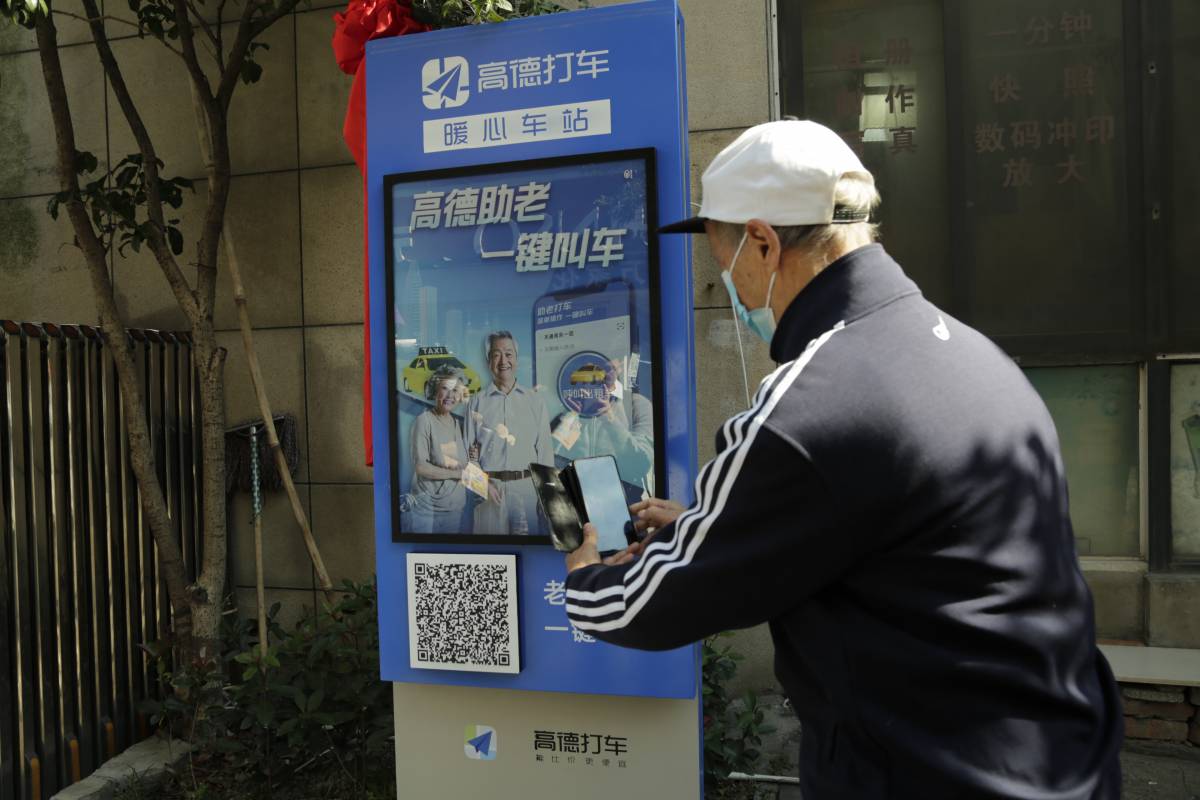
Alibaba is helping the elderly gain access to daily services. Photo credit: Alibaba Group
Alibaba Group is helping to close the digital divide with artificial intelligence (AI) that aides the elderly and visually impaired gain access to daily services, from transport to online shopping.
The Hangzhou-based company is making its platforms more inclusive with options featuring larger fonts, simplified navigation and voice assistance. Its research and innovation institute the DAMO Academy also launched tools powered by AI to close the gap for people in need.
More than 85 million disabled and 260 million people over the age of 60 live in China, according to a report published this year by the science and tech research institute China Academy of Information and Communications Technology. By 2050, close to one third of China’s population will be seniors aged over 60, according to the research agency China Development Research Foundation.
Alibaba marked its sixth annual Philanthropy Week with a series of offline and online philanthropy initiatives this week.
In the fiscal year ending March 31, around 780 million charitable deeds were conducted by people on its philanthropy platform, which lists over 4,000 charities and nonprofit organizations for users to donate their time to.
Braille Translator
DAMO Academy is piloting Braille-to-text technology that provides real-time translation of Braille, with a combination of machine learning and optical character recognition to do the heavy lifting.
A scanner-like device copies the Braille text, and converts it into patterns of dots with computer vision, a form of AI technology that can interpret and understand visual inputs. The device then translates the dots into romanized spelling for Mandarin and later into characters with natural language processing.
Though it sounds complex, DAMO Academy reduced the entire AI process to around a second or two, making the translation near-simultaneous.
The technology has helped teachers review homework in schools for the blind. While the severely visually impaired can read Braille by feeling patterns of dots with their hands, people with sight read the raised dots, a time-consuming task even for teachers who’ve been trained in special needs.
“It’s much faster to review students’ essays with the assistive technology,” said Zhang Xinhua, a Chinese teacher at Zhejiang School for the blind who’s been using the technology since 2021.
The device also converts Braille graphs and special symbols such as chemical formulas and mathematical equations, into text.

Alzheimer’s Detection
As the population ages rapidly, the number of people living with the degenerative disease Alzheimer’s is growing fast. In 2020, 9.8 million Chinese residents had the condition, which affects memory and motor skills, according to The Lancet.
To facilitate early-stage and preliminary screening of Alzheimer’s disease, DAMO Academy launched a mini-program in Alipay in collaboration with Alzheimer’s Disease China last month.
“Many elderly folks who suffer from early symptoms won’t make it to hospitals or are not willing to take the tests in hospitals. This mini-program will be convenient for them,” said 56-year-old Li Yuanjiang, a Beijing resident who was among the first group to take the quick test with the help of doctors at Peking University First Hospital.
The elderly will be asked to respond in audio to cognitive test questions and pass a clock-drawing test in the Alipay app. The entire process takes around 10 minutes. The AI-powered app will make a preliminary assessment shortly after the test, relying on multi-modal learning algorithms that analyze the audio and writing.
The mini-program will then submit the preliminary assessment to a professional medical expert for review, with a final result available in seven days. People considered at high risk would get a notification in Alipay, urging them to seek additional professional medical assistance.
The mini-program is the first in China to screen for Alzheimer’s with the help of AI, said Sun Yongan, chief physician at Peking University First Hospital.
The program will provide additional support in rural and remote areas, where medical resource shortages persist. “It’s hard to find medical specialists working in this area in county-level hospitals in China,” said Dr. Sun.

Ride-hailing Simplified
For tech-shy seniors, the simpler, the better when it comes to platform navigation.
To help elderly residents who find it hard to navigate ride-hailing apps, Alibaba’s navigation platform Amap teamed up with China Aging Development Foundation last year to roll out over 2,500 ride-hailing points in 20 cities.
Stops are usually near apartment entrances and bus stops. Residents can scan an enlarged QR code on the stops underneath a “One Click Ride-hailing” sign with their smartphones. They will then be directed to a page showing a blinking blue button that will call a taxi when pressed.
“The whole ride-hailing process is simplified to scanning a QR code and tapping on smartphones,” said Wang Guixin, Vice President at Amap.
Elderly users do not need to enter their pick-up location or destination. A pin is dropped automatically on the digital maps. Destination and digital payment are optional, allowing elderly users to pay in cash and communicate their point of destination.
Amap said last October that it would build over 10,000 ride-hailing stops across China in five years.




